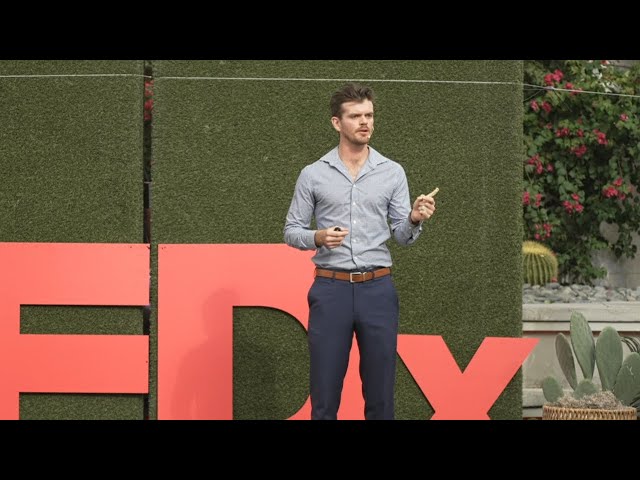In an era where the hustle and bustle of urban life often drowns out the whispers of nature, there lies an undeniable need for the revitalization of our connection with the environment. The TEDx Talk titled “Our Urban Oasis – Creating Habitat for Wildlife in Action” serves as an illuminating beacon, encouraging individuals and communities to rethink the spaces they occupy. This talk, rich in insights and revelations, inspires an exploration into the potential of urban environments as sanctuaries rather than mere concrete jungles. The presentation elucidates not only the ecological importance but also the profound psychological benefits that come with fostering a connection to wildlife.
The core thesis of this enlightening discourse posits that urban areas can be transformed into thriving habitats for wildlife, fundamentally altering the urban experience. This is not merely a fanciful dream; it is a practical approach backed by environmental science and grassroots efforts. A PDF accompanying the talk sheds light on actionable strategies, research findings, and personal anecdotes that underline the urgency of this undertaking.
Within the realms of urban planning and community development, the integration of green spaces is paramount. The hand-in-hand relationship between nature and urban landscapes can yield exceptional benefits. By implementing thoughtful designs that incorporate gardens, green roofs, and native plantings, cities can become havens for various species. This not only promotes biodiversity but also enhances the quality of life for urban dwellers. As discussed in the talk, the mere presence of greenery has been shown to alleviate stress and boost mental well-being. Moreover, fostering habitats for wildlife can serve as an educational tool, awakening the curiosity of both children and adults alike.
One of the standout features of the TEDx Talk is its passionate emphasis on community involvement. The speaker meticulously outlines how neighborhoods can band together to create micro-habitats, transforming underutilized spaces into flourishing ecosystems. Such collective actions, whether as simple as planting flowers or as involved as organizing community gardening projects, catalyze a shared sense of purpose. This synergy not only enriches the local environment but also cultivates a sense of belonging among residents. The PDF extends this conversation by providing detailed checklists and resources for organizing community-led initiatives, ensuring that anyone can partake in this movement.
The synergistic relationship between urban wildlife and humanity unfolds dramatically in the talk through compelling data and anecdotal evidence. For instance, it is noted that cities can support a diverse range of wildlife, from songbirds to pollinators. These creatures are not simply visitors; they play pivotal roles in urban ecosystems. Pollinators, in particular, are crucial for the survival of many plant species that contribute to the urban aesthetic and provide food sources. The PDF elaborates on this by delving into specific pollinator-friendly plants, significantly enriching the reader’s understanding. Understanding the intricate interdependencies between species fosters a holistic view of city life.
Beyond the ecological aspect, the talk poignantly explores the psychological and physiological benefits of cultivating green spaces. The benefits of engaging with nature are manifold. Studies referenced suggest that exposure to natural environments enhances cognitive function, sharpens attention, and improves overall mood. Such effects are crucial, particularly in today’s fast-paced lifestyles. The PDF accompanies these claims with empirical studies that validate the power of nature in mitigating anxiety and improving mental health outcomes.
Furthermore, as urbanization continues to sweep across the globe, the necessity for sustainable practices becomes increasingly glaring. The talk emphasizes that integrating wildlife-friendly designs into urban planning is not merely an option; it is imperative for sustainability. Mitigation of urban heat, reduction of carbon footprints, and enhancement of air quality are all byproducts of such initiatives. The PDF outlines practical frameworks for policymakers and developers to adopt these ideals into their projects, thus promoting a shift towards a more sustainable urban paradigm.
One of the most compelling narratives in the talk revolves around the transformative power of personal initiative. The speaker shares stories of individuals and grassroots organizations that have successfully turned barren lots into lush gardens and wildlife sanctuaries. These testimonials imbue the presentation with a sense of hope and determination, urging listeners to take matters into their own hands. The PDF features a compilation of inspiring success stories, proving that monumental change can stem from seemingly small actions.
As this TEDx Talk illustrates, creating habitats for wildlife within urban settings is not simply an environmental concern; it is a holistic approach that benefits humans and non-humans alike. Call it an evolution of our urban landscapes, a renaissance of harmony between civilization and nature. By engaging communities in this transformative dialogue, we move closer to a future where cities do not compete with nature but coexist with it. Armed with the knowledge and inspiration gleaned from this talk and its accompanying PDF, anyone can become a steward of the environment, paving the way for a greener, more harmonious world.
Ultimately, this initiative compels us to reevaluate our priorities. It pushes the envelope on what we define as progress. The urban oasis beckons—a realm where possibility flourishes, communities thrive, and wildlife roams amidst the serene backdrop of human innovation. How can you play a part in this movement? The answer lies within the very essence of your own surroundings.









Leave a Comment